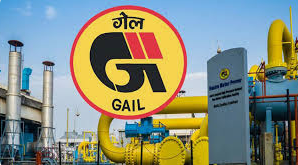For nearly four decades, GAIL (Gas Authority of India Ltd.) has been the backbone of India’s natural gas infrastructure — building, owning, and controlling most of the country’s high-pressure transmission network. But now, that supremacy is under threat. A bold reform push by regulators could reshape the very foundations of India’s gas-distribution system.
At the heart of this standoff is an expert committee’s report titled Vision 2040 – Natural Gas Infrastructure in India. The committee, formed under the Petroleum & Natural Gas Regulatory Board (PNGRB), proposes to separate pipeline operations from gas trading. In simpler terms: the companies that transport gas would no longer be allowed to also trade or market it.
For GAIL, which has long combined both roles, this is a potential existential risk. The company is aggressively opposing these recommendations, warning that such a move could undermine its integrated advantage and hurt its business model.
Why the Reform Matters
- Neutrality & Fair Access: The committee argues that by separating pipeline operations from trading, India can establish a more neutral “system operator” model. This is similar to mature energy markets around the world, where independent operators manage network access, opening the pipelines to third-party users.
- Competition & Efficiency: The reform could enable new players to use pipelines without being forced to rely on GAIL for marketing. This could lower barriers for gas producers and distributors, spurring competition and reducing costs for end consumers.
GAIL’s Dominance
GAIL’s grip on pipeline infrastructure is formidable. The company owns a major portion of India’s cross-country and trunk pipelines, giving it significant control over where and how gas flows.
This dominance has fueled concerns. Critics argue that GAIL’s dual role as both transporter and marketer gives it unfair leverage, disadvantaging smaller or newer players who lack direct access to the network.
Regulatory Pressure & the Push for Change
This is not a new debate. The PNGRB had earlier appointed a committee under former SEBI chief Ajay Tyagi to recommend ending monopolies in gas transmission and marketing. That committee was tasked with exploring models where pipeline businesses are decoupled from gas sales — a premise very similar to what Vision 2040 proposes.
The broader goal: foster a more competitive, transparent, and efficient gas market in India.
Implications for the Gas Market
- Gas Pricing: A reformed pipeline access regime could drive down transport costs and increase efficiency. This comes alongside other changes: regulators are also looking at relaxing price ceilings on certain gas fields to bring domestic prices closer to global levels.
- Infrastructure Investment: If pipeline access becomes more liberal, it could attract higher investments in gas distribution infrastructure. That’s especially crucial for India, where many regions still lack comprehensive pipeline connectivity.
- Market Entry: New or smaller players — whether pure marketers or producers — could gain access to pipeline capacity without relying on GAIL. Over time, this could democratize pipeline usage.
- Consumer Outcomes: Ultimately, a more open pipeline network could lower the cost of gas for industries and consumers, making clean energy more affordable and accessible.
GAIL’s Challenge
GAIL, however, sees the reform as a direct challenge to its business model. By giving up the ability to both transport and trade gas, the company fears it could lose a strategic competitive edge.
There’s also a risk perspective — operational risks, revenue risks, and potential dilution of its core competencies.
For regulators, though, the trade-off is worth it. The hope is that a more open gas-grid regime will accelerate India’s transition to a gas-based energy economy — helping meet demand, reducing emissions, and driving efficiency.
India stands at a crossroads. On one side is the powerful legacy of GAIL, built over decades of state-led infrastructure growth. On the other is a vision of a more liberalized, competitive, and efficient gas market. The outcome of Vision 2040 could define who controls India’s gas pipelines — and determine whether the country’s gas ambitions finally catch up with its clean-energy goals.








